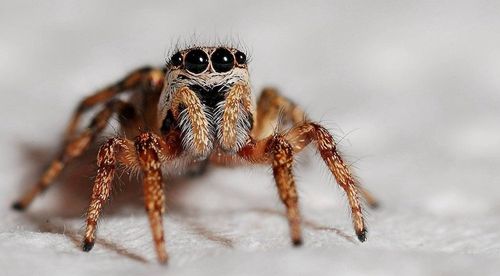
What to Do in Spider Bite: A Comprehensive Guide
When it comes to spider bites, it’s crucial to know how to react promptly and effectively. Spider bites can range from mild to severe, and some species can be venomous. Here’s a detailed guide on what to do in case of a spider bite.
Identifying the Spider Bite
The first step is to identify the spider bite. Look for the following signs:- A small, red or purple bump at the bite site- Swelling, redness, or pain around the bite- Nausea, vomiting, or diarrhea- Difficulty breathing or swallowing- Severe pain or muscle crampsIf you’re unsure about the spider, take a clear photo and try to capture the spider itself. This information can be vital for proper treatment.
Immediate First Aid
Once you’ve identified the spider bite, follow these immediate first aid steps:
1. Wash the bite area with soap and water to prevent infection.
2. Apply a cool, wet compress to reduce swelling and pain. Do this for about 10-15 minutes at a time.

3. Elevate the affected area if possible to reduce swelling.
4. Avoid scratching the bite area to prevent infection.
When to Seek Medical Attention
In some cases, you may need to seek medical attention immediately. Here are some signs that indicate you should see a healthcare professional:- Difficulty breathing or swallowing- Severe pain or muscle cramps- Nausea, vomiting, or diarrhea- Swelling that spreads beyond the bite area- Signs of infection, such as increased redness, warmth, or pus
Spider Bite Treatment
The treatment for a spider bite depends on the severity of the bite and the species of spider. Here’s a general overview:
1. Pain Relief: Over-the-counter pain relievers like ibuprofen or acetaminophen can help alleviate pain.
2. Antihistamines: If you have an allergic reaction, antihistamines can help reduce itching and swelling.

3. Antibiotics: In some cases, your doctor may prescribe antibiotics to prevent or treat infection.
4. Antivenom: For severe bites from venomous spiders like the black widow or brown recluse, antivenom may be necessary. This is typically administered in a hospital setting.
Preventing Spider Bites
To reduce your risk of a spider bite, follow these prevention tips:
1. Keep your home clean and clutter-free. Spiders often seek shelter in dark, undisturbed areas.
2. Seal any cracks or gaps around your home, especially in areas where pipes or electrical lines enter.
3. Wear gloves when handling items that may have been in a dark, undisturbed area.
4. Be cautious when moving boxes or other items that have been stored for a long time.
5. Avoid leaving food out overnight, as it can attract spiders.
Spider Bite Symptoms and Treatment Table
| Spider Species | Common Symptoms | Treatment |
|---|---|---|
| Black Widow | Pain, redness, swelling, nausea, vomiting, muscle cramps | Antivenom, pain relievers, antihistamines, antibiotics |
| Brown Recluse | Pain, redness, swelling, itching, blistering, fever, chills | Antivenom, pain relievers, antihistamines, antibiotics |
| House Spider | Mild pain, redness, swelling | Pain relievers, antihistamines, antibiotics (if necessary) |
In conclusion, knowing what to do in case of a spider bite is essential for your safety. By identifying the spider bite, providing immediate first aid, seeking medical attention when necessary, and taking preventive measures, you can minimize the risk and severity of spider bites. Always remember to consult a healthcare professional for personalized advice and treatment.







